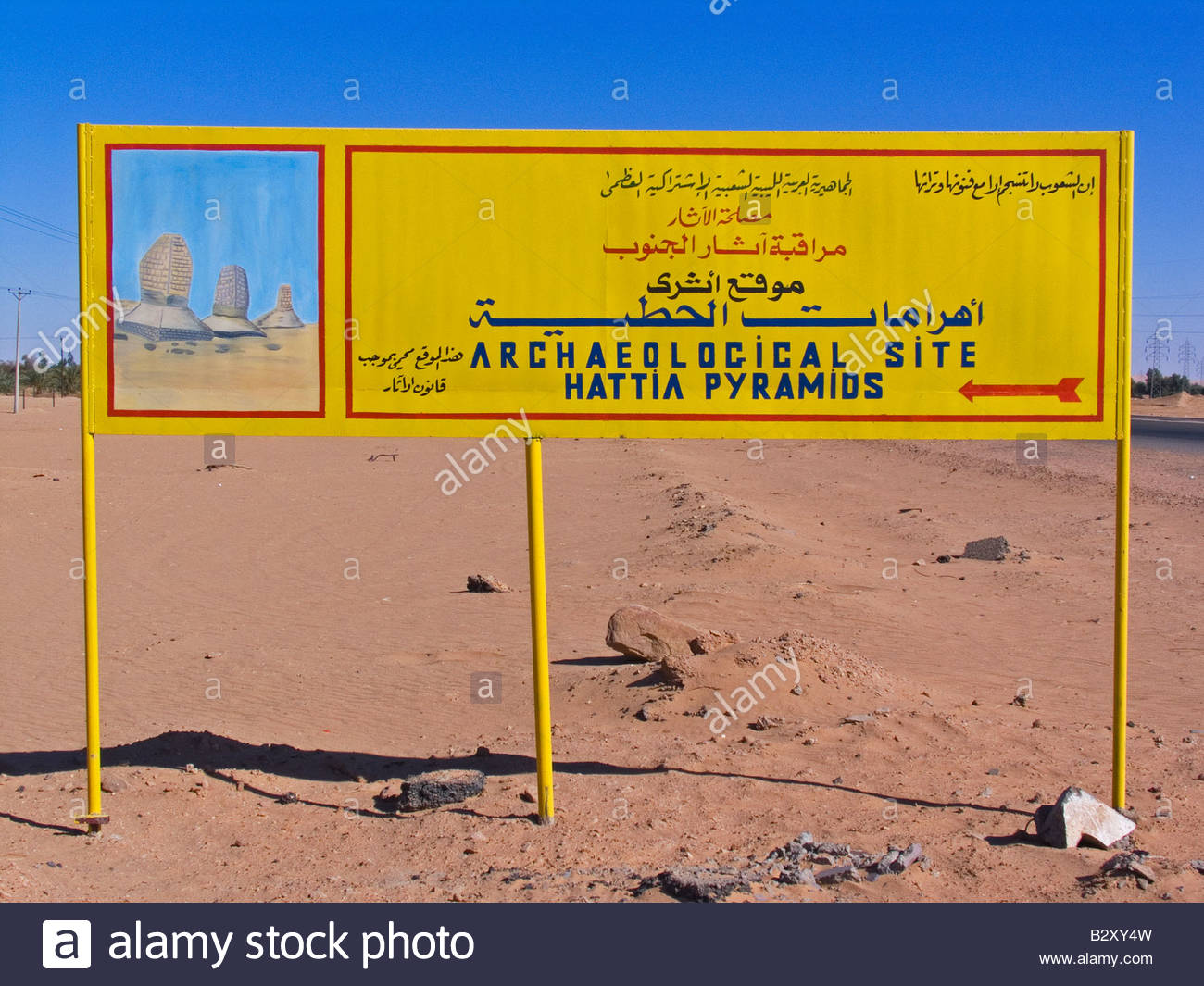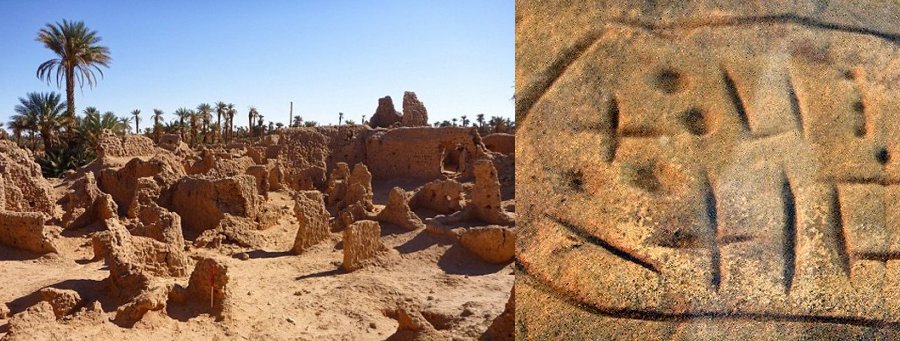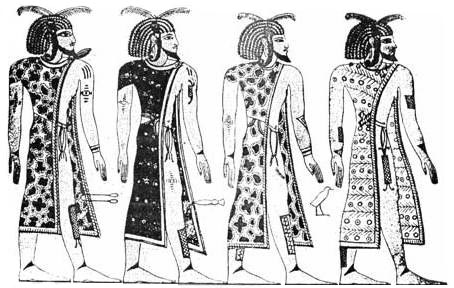Sauanaffe Tustunnagee
Banned
Garamantian Empire
 So far, twenty have been counted
So far, twenty have been counted
The Forgotten Pyramids
An ancient civilization ignored by Gaddafi holds old treasures and wisdom, including pyramids unknown to many.
6/5/2016 | Zuwarah
Several roads lead to the Hattia Pyramids, 1,128 kilometers south of Tripoli, the most prominent one crosses Ajal Valley from Ubari through Germa to the desert. The pyramids are witnesses to the ancient Garamantian civilization, which was established in the area more than 3000 years ago and extended to the Mediterranean coast. The pyramids were discovered buried in the sand in the 1950s.
Sub-Saharan civilization
To reach the pyramids, one passes through Germa with its museum and legendary Mountain Zenkikra, which was a natural bulwark for the Garamantian civilization. On the walls of its caves, painters of that era engraved scenes from their daily lives. On its rocks, they left the Tifinagh alphabet. At the foot of the mountain, people practiced agriculture and grazing after finding out the secret of groundwater exploitation and its use in their daily lives. They excelled in many disciplines, such as engineering, mummification, geography, astronomy, trade and economy, in addition to agriculture, grazing and water use.
Hattia pyramids are a 25-minute drive from Zenkikra, and have stood test of time and erosion for more than 3,000 years, standing amidst a civilization that prevailed in this valley and controlled a wide area of the desert – about 300 square kilometers. At the time, this civilization threatened cities along the Mediterranean coast and the people of the sub-Saharan region in Chad and Niger, as confirmed by British archaeologist David Mattingly.
Graves of Garamantes
These pyramids are known locally as Hattia Cemetery. Despite their interest in houses more than graves, Garamantes, like other ancient peoples, knew several ways to bury – in a circle, square or pyramid shape. They were keen to put tombstones on their graves, in the form of two-meter stone obelisks, two horns, five-finger palm, or a triangle, the goddess Tanit icon. Tombstones were placed to the west opposite the sunrise or to the east opposite the sunset, as pointed out by Dr. Rajap el-Athram in his book ‘Lectures on Ancient Libyan History’.
According to D. Mahmoud el-Nafs, a Libyan archeologist, Hattia Pyramids are graves of mudstones, in the form of a hole with a diameter of one to six meters, a height of four to five meters and a depth of no more than a meter, stacked with a wall of stones inside.
The body, says the expert, was shrouded like a fetus in the burial room at the bottom of the pyramid, with some pottery tools, and the grave was closed with one or two stones to prevent animals from reaching the body.
So far, twenty pyramids have been counted, some of which are in good condition. Some have been affected by natural factors and others have been destroyed by grave robbers. These pyramids, Nafs says, "May be one of the rarest, most beautiful and largest tombs discovered, and are the most important, but not the only discovery in the valley. Research indicated to the existence of smaller pyramids in the Kheraiq area in Ajal Valley.
Garamantes and pharaohs
The concept behind pyramids in Garamantes is the same of that of pharaohs, says Shawki Ibrahim Muammar, ancient settlement researcher and professor of history at the University of the Azzawia. "Many researchers agree on the existence of a close relationship between Hattia pyramids dating to the second century BC. and Giza pyramids dating to the second millennium BC."
The idea of pyramidal burial emerged from the mountains, says Muammar. Humans buried their dead inside caves, then on mountaintops and then at the foot of mountains. The link between man and mountains is strong, historical and philosophical, says Muammar. "The oldest models of pyramidal graves are the prehistoric graves spread across the Libyan Desert, which are smaller and less developed than the architecture of pyramids in Egypt, but with the same idea," Muammar added.
Dazzle and regret
These pyramids gained the attention of researchers and impressed tourists. Most people believed that only the pharaohs and the Aztecs built pyramids, according to certificates of Shukri Fetais, a tourist guide.
Kamal Abu Zeid, a photographer and researcher, who visited Hattia pyramids with many tour groups, says that most visitors regretted the negligence of the pyramids and could not believe their age. Fetais and Abu Zaid agree that most of the tourist attractions were neglected, and Libya lost many monuments because of tampering, destruction and theft.
Lack of experience or neglect?
In the late 1990s, says Muammar, Hattia Pyramids were endangered because the mud material could not resist erosion, especially with the lack of attention and follow-up. The antiquities department then restored the pyramids but somehow changed their shape.
Muammar attributed this maintenance error to a lack of experience. “The original shape of the monument must be restored without distortion,” he says. Comparing images of the pyramids before and after maintenance, there was a difference in shape, he says.
David Mattingly, an English historian, replied to this question in an article published years ago in the Libyan Historic Studies newspaper, describing the latest discoveries about the Jermntyon civilization as "extraordinary". The discoveries prove great commercial movement across the desert long before the Islamic era in the region. "All those startling discoveries ended up in the Gaddafi Office, which did not show any interest in this civilization."
Garamantian civilization was not mentioned in the curriculum at all during the reign of the former regime. D. Mattingly regretted this situation but expressed hope that it would change in the future.
"Whether this situation will change or not, and despite all effacement and marginalization attempts, Jermntyon civilization remains an honorable page of the history of Libya, and a source of pride for us," says Abu Salah Tahir, a resident of the city of Germa.
According to Tahir, the people of his city consider Hattia Cemetery as a priceless treasure and a true reflection of the civilization of the ancestors who had excelled in various sciences and built for their kings. "Fantastic graves that are still steadfast and will endure in spite of all threats until we find those who know their value and how to preserve them."

The Forgotten Pyramids
An ancient civilization ignored by Gaddafi holds old treasures and wisdom, including pyramids unknown to many.
6/5/2016 | Zuwarah
Several roads lead to the Hattia Pyramids, 1,128 kilometers south of Tripoli, the most prominent one crosses Ajal Valley from Ubari through Germa to the desert. The pyramids are witnesses to the ancient Garamantian civilization, which was established in the area more than 3000 years ago and extended to the Mediterranean coast. The pyramids were discovered buried in the sand in the 1950s.
Sub-Saharan civilization
To reach the pyramids, one passes through Germa with its museum and legendary Mountain Zenkikra, which was a natural bulwark for the Garamantian civilization. On the walls of its caves, painters of that era engraved scenes from their daily lives. On its rocks, they left the Tifinagh alphabet. At the foot of the mountain, people practiced agriculture and grazing after finding out the secret of groundwater exploitation and its use in their daily lives. They excelled in many disciplines, such as engineering, mummification, geography, astronomy, trade and economy, in addition to agriculture, grazing and water use.
Hattia pyramids are a 25-minute drive from Zenkikra, and have stood test of time and erosion for more than 3,000 years, standing amidst a civilization that prevailed in this valley and controlled a wide area of the desert – about 300 square kilometers. At the time, this civilization threatened cities along the Mediterranean coast and the people of the sub-Saharan region in Chad and Niger, as confirmed by British archaeologist David Mattingly.
Graves of Garamantes
These pyramids are known locally as Hattia Cemetery. Despite their interest in houses more than graves, Garamantes, like other ancient peoples, knew several ways to bury – in a circle, square or pyramid shape. They were keen to put tombstones on their graves, in the form of two-meter stone obelisks, two horns, five-finger palm, or a triangle, the goddess Tanit icon. Tombstones were placed to the west opposite the sunrise or to the east opposite the sunset, as pointed out by Dr. Rajap el-Athram in his book ‘Lectures on Ancient Libyan History’.
According to D. Mahmoud el-Nafs, a Libyan archeologist, Hattia Pyramids are graves of mudstones, in the form of a hole with a diameter of one to six meters, a height of four to five meters and a depth of no more than a meter, stacked with a wall of stones inside.
The body, says the expert, was shrouded like a fetus in the burial room at the bottom of the pyramid, with some pottery tools, and the grave was closed with one or two stones to prevent animals from reaching the body.
So far, twenty pyramids have been counted, some of which are in good condition. Some have been affected by natural factors and others have been destroyed by grave robbers. These pyramids, Nafs says, "May be one of the rarest, most beautiful and largest tombs discovered, and are the most important, but not the only discovery in the valley. Research indicated to the existence of smaller pyramids in the Kheraiq area in Ajal Valley.
Garamantes and pharaohs
The concept behind pyramids in Garamantes is the same of that of pharaohs, says Shawki Ibrahim Muammar, ancient settlement researcher and professor of history at the University of the Azzawia. "Many researchers agree on the existence of a close relationship between Hattia pyramids dating to the second century BC. and Giza pyramids dating to the second millennium BC."
The idea of pyramidal burial emerged from the mountains, says Muammar. Humans buried their dead inside caves, then on mountaintops and then at the foot of mountains. The link between man and mountains is strong, historical and philosophical, says Muammar. "The oldest models of pyramidal graves are the prehistoric graves spread across the Libyan Desert, which are smaller and less developed than the architecture of pyramids in Egypt, but with the same idea," Muammar added.
Dazzle and regret
These pyramids gained the attention of researchers and impressed tourists. Most people believed that only the pharaohs and the Aztecs built pyramids, according to certificates of Shukri Fetais, a tourist guide.
Kamal Abu Zeid, a photographer and researcher, who visited Hattia pyramids with many tour groups, says that most visitors regretted the negligence of the pyramids and could not believe their age. Fetais and Abu Zaid agree that most of the tourist attractions were neglected, and Libya lost many monuments because of tampering, destruction and theft.
Lack of experience or neglect?
In the late 1990s, says Muammar, Hattia Pyramids were endangered because the mud material could not resist erosion, especially with the lack of attention and follow-up. The antiquities department then restored the pyramids but somehow changed their shape.
Muammar attributed this maintenance error to a lack of experience. “The original shape of the monument must be restored without distortion,” he says. Comparing images of the pyramids before and after maintenance, there was a difference in shape, he says.
David Mattingly, an English historian, replied to this question in an article published years ago in the Libyan Historic Studies newspaper, describing the latest discoveries about the Jermntyon civilization as "extraordinary". The discoveries prove great commercial movement across the desert long before the Islamic era in the region. "All those startling discoveries ended up in the Gaddafi Office, which did not show any interest in this civilization."
Garamantian civilization was not mentioned in the curriculum at all during the reign of the former regime. D. Mattingly regretted this situation but expressed hope that it would change in the future.
"Whether this situation will change or not, and despite all effacement and marginalization attempts, Jermntyon civilization remains an honorable page of the history of Libya, and a source of pride for us," says Abu Salah Tahir, a resident of the city of Germa.
According to Tahir, the people of his city consider Hattia Cemetery as a priceless treasure and a true reflection of the civilization of the ancestors who had excelled in various sciences and built for their kings. "Fantastic graves that are still steadfast and will endure in spite of all threats until we find those who know their value and how to preserve them."














